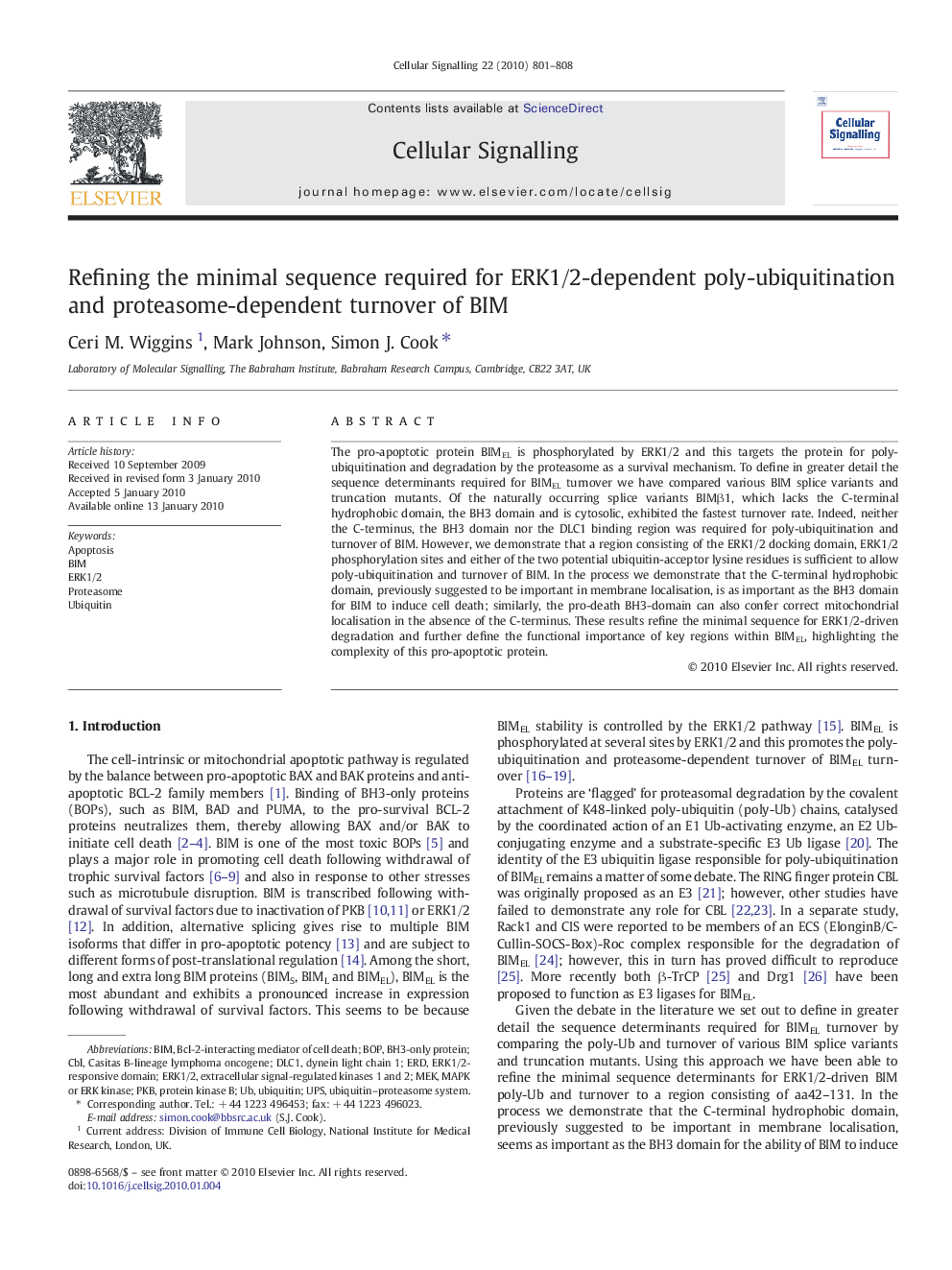| Article ID | Journal | Published Year | Pages | File Type |
|---|---|---|---|---|
| 1963902 | Cellular Signalling | 2010 | 8 Pages |
The pro-apoptotic protein BIMEL is phosphorylated by ERK1/2 and this targets the protein for poly-ubiquitination and degradation by the proteasome as a survival mechanism. To define in greater detail the sequence determinants required for BIMEL turnover we have compared various BIM splice variants and truncation mutants. Of the naturally occurring splice variants BIMβ1, which lacks the C-terminal hydrophobic domain, the BH3 domain and is cytosolic, exhibited the fastest turnover rate. Indeed, neither the C-terminus, the BH3 domain nor the DLC1 binding region was required for poly-ubiquitination and turnover of BIM. However, we demonstrate that a region consisting of the ERK1/2 docking domain, ERK1/2 phosphorylation sites and either of the two potential ubiquitin-acceptor lysine residues is sufficient to allow poly-ubiquitination and turnover of BIM. In the process we demonstrate that the C-terminal hydrophobic domain, previously suggested to be important in membrane localisation, is as important as the BH3 domain for BIM to induce cell death; similarly, the pro-death BH3-domain can also confer correct mitochondrial localisation in the absence of the C-terminus. These results refine the minimal sequence for ERK1/2-driven degradation and further define the functional importance of key regions within BIMEL, highlighting the complexity of this pro-apoptotic protein.
